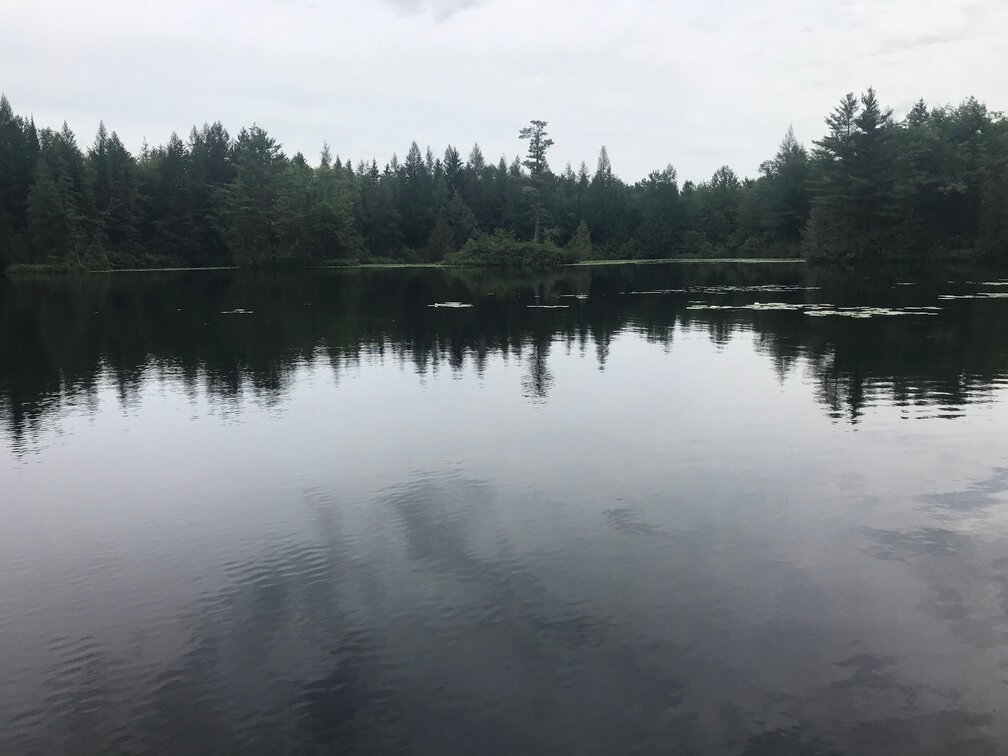Big Lake in Shawano County has been fighting Eurasian watermilfoil on their lake for years. They have seen success with a couple large scale herbicide treatments to keep the Eurasian watermilfoil at bay but they have been unable to eliminate it. These herbicide treatments have offered relief from the ring of Eurasian watermilfoil that has moved into their lake and spread. The BLPOA hopes to knock the milfoil back to manageable levels and then use other methods of control, like hand-harvesting and Diver Assisted Suction Harvesting, to continue to decrease its presence in Big Lake.

Big Lake Property Owners Association (BLPOA) and Waterways Association of Menominee & Shawano Counties (WAMSCO) are partnering to complete the aquatic plant management plan with the help of Aquatic Plant Habitat Services. Through grant funding from the Wisconsin Department of Natural Resources, the BLPOA with support from WAMSCO are completing important work in 2020 and 2021 with aquatic plant surveys, temperature profile monitoring, residual herbicide monitoring after herbicide treatment, and development of an aquatic plant management plan.
This work is key in protecting Big Lake. There are many people involved in making this project and herbicide treatment and successful, so let’s meet them!
 Sara Hateli with Aquatic Plant and Habitat Services LLC started her journey into the aquatic realm in college when an undergraduate professor, Dr. Kristina Beuning, hired her to conduct lake monitoring and sampling for two summers.
Sara Hateli with Aquatic Plant and Habitat Services LLC started her journey into the aquatic realm in college when an undergraduate professor, Dr. Kristina Beuning, hired her to conduct lake monitoring and sampling for two summers.
The time spent alone in a boat while troubleshooting through the challenges of field work were incredibly rewarding. She followed her interest and experience through various jobs in the natural resources field and graduate school. Life brought about changes that ultimately led her to start Aquatic Plant & Habitat Services LLC so she could work from home and still do field work on lakes.
She anticipated that this arrangement would only last a couple years. As things turned out, the field surveys and consulting work has kept her on her toes for nine years and running.
Ginny Seuchting is the CLMN volunteer on Big Lake who agreed to conduct the daily temperature monitoring and post-treatment sampling this year.
Ginny is a retired science teacher who would bring her students to Big Lake for a three-day field trip each year. They would learn about both aquatic and terrestrial work including sampling the lake for water quality.
Ginny, her husband, and their two dogs now reside on Big Lake almost year round and want to protect the lake.
Brenda Nordin is the lakes biologist for Shawano County with the WDNR. Her knowledge is extremely important to ensure the herbicide treatment is completed at the right time. With the help of Ginny, Brenda will use the daily temperature monitoring to track the thermocline in the lake. An established thermocline is very important to the herbicide treatment.
Michelle Nault is also with the WDNR and provides the link between Big Lake and the State Lab of Hygiene for the post-treatment herbicide samples. Michelle helped provide sample bottles and other SLOH materials.
Brenda and Michelle have worked together on a number of projects similar to this over the years and their knowledge is invaluable.

Emily Henrigillis is the regional watershed coordinator for the Connecting Our Waters program of Fox-Wolf Watershed Alliance in partnership with WAMSCO. Emily provided the herbicide monitoring training to Ginny and has kindly agreed to provide training for Ginny in sampling protocols.
Brenda and Michelle invited Emily to assist in conducting a point-intercept survey on Big Lake in 2018 to check in on the Eurasian watermilfoil presence at that time. The Eurasian watermilfoil was found to be increasing which lead to the BLPOA and WAMSCO pursue the contract work with Sara with Aquatic Plant & Habitat Services, LLC.
The work of these women has made the Big Lake Eurasian watermilfoil treatment and post-herbicide monitoring possible and Big Lake will benefit from it!

